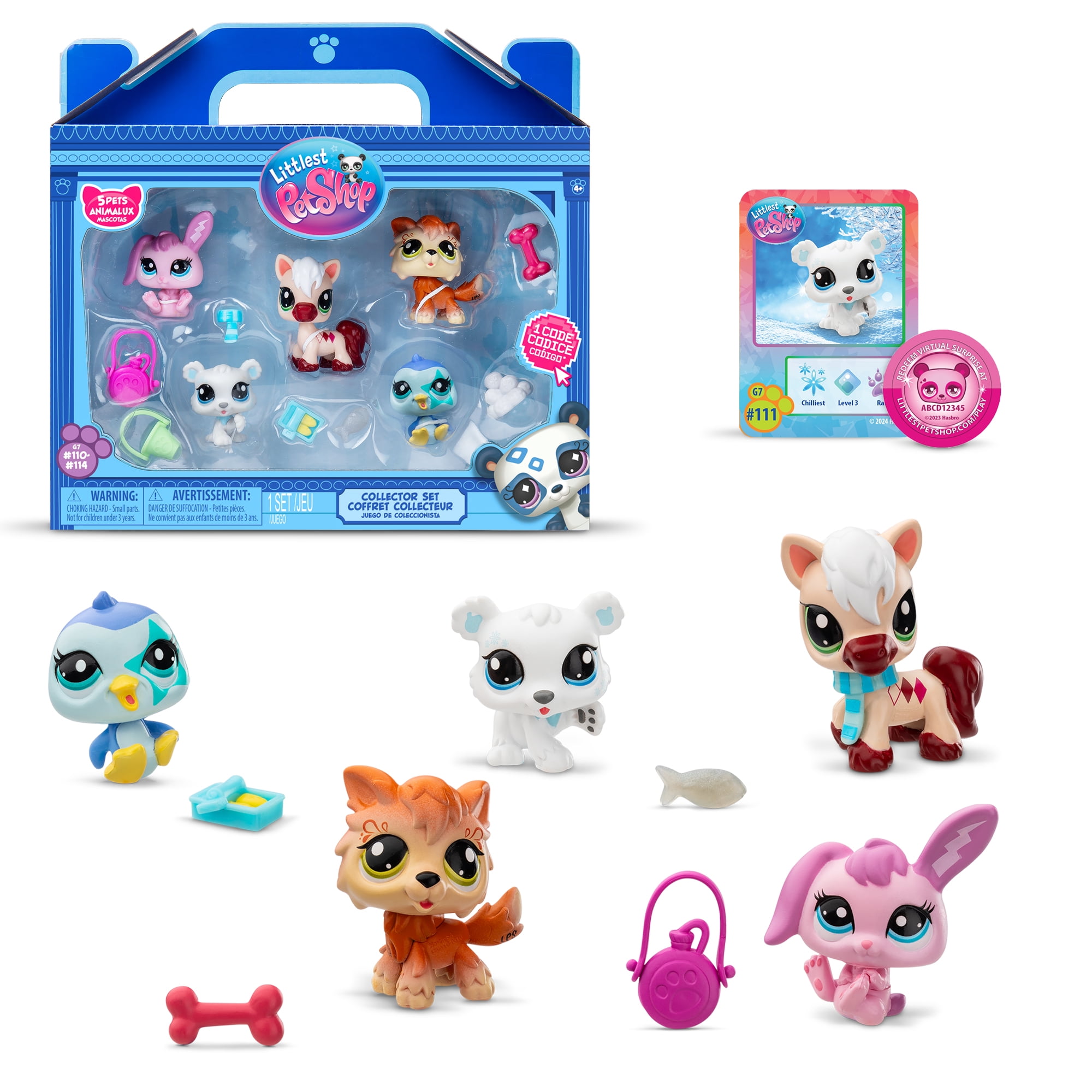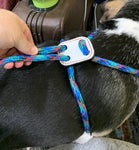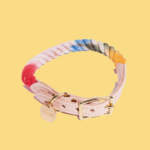DIY Dog Harness for Small Dogs: Easy Steps to Create the Perfect Fit
Creating a DIY dog harness for small dogs is a fun and rewarding project that allows you to craft something both stylish and functional for your pet. Whether you’re trying to save money, find a perfect fit for your small dog, or just enjoy crafting, making a harness is an excellent way to show your pet some love. This guide will walk you through the materials you’ll need, different harness designs, and step-by-step instructions for creating the perfect harness tailored to your dog’s needs.
Materials You Will Need for a DIY Dog Harness
Before you dive into the steps, let’s first gather the essential materials you’ll need for this project. You don’t need to be an expert seamstress to complete this DIY project, but having the right tools and materials is crucial for a comfortable, secure fit.
1. Fabric or Webbing
The choice of material largely depends on the design you choose. For a soft, comfortable harness, fabric options like fleece or cotton are perfect. On the other hand, for a strong and durable harness, you may want to opt for nylon webbing. It’s perfect for those who want a more robust design that resembles store-bought harnesses.
2. D-Rings
D-rings are essential for attaching the leash to the harness. They come in different sizes, so make sure to choose ones that are appropriate for your dog’s size and weight.
3. Buckle
A side-release buckle is commonly used because it allows for easy putting on and taking off of the harness. Make sure it’s sturdy, as the buckle will be a critical attachment point.
4. Velcro
Velcro is useful for creating adjustable areas on the harness, which is particularly important for small dogs that may fluctuate in size. Velcro also helps in making the harness easy to adjust and comfortable for your dog.
5. Thread
Select a thread that matches the fabric or webbing you’re using for your harness. The stronger, the better, as you want the harness to hold up during walks or adventures.
6. Scissors and Sewing Machine
A good pair of scissors is essential for cutting your fabric or webbing to the right size. While a sewing machine isn’t strictly required, it will certainly help speed up the process and provide more secure stitching for your harness.
Step-by-Step Guide to Making a DIY Dog Harness
Now that you have your materials ready, it’s time to dive into the process of creating your very own dog harness for small dogs. There are several design options to choose from, depending on your skill level and your dog’s specific needs.
Step 1: Choose Your Design
Before you start cutting and sewing, choose a design that suits your skills and your dog’s needs. Here are a few options:
Kimono Dog Harness
- Materials: Fabric, bias binding, D-rings, Velcro
- Difficulty: Moderate
This design is great for small dogs and allows for a lot of customization with fun, colorful fabrics. It’s comfortable and ideal for pet owners looking to add a bit of style to their dog’s wardrobe.
Nylon Webbing Step-in Harness

- Materials: Nylon webbing, release buckle, D-rings
- Difficulty: Moderate to Hard
This is a sturdy and durable design that closely resembles store-bought harnesses. It’s perfect for small dogs who need something more robust for regular walks or outdoor adventures.
DIY No Pull Harness

- Materials: Old leash, collar, carabiner clip
- Difficulty: Easy
If your dog is prone to pulling, this simple harness is a great solution. It’s an easy project using old materials, making it a great budget-friendly option for dog owners.
Step 2: Measure Your Dog for the Perfect Fit
Accurate measurements are crucial to ensuring that the harness fits snugly and comfortably on your dog. You’ll need to measure the following:
- Neck circumference – Measure around the neck at the point where the collar would sit.
- Chest circumference – Measure around the widest part of your dog’s chest, just behind the front legs.
Use these measurements to cut your fabric or webbing to the correct length. If your dog is between sizes, it’s better to cut slightly larger and use the Velcro for adjustments.
Step 3: Cutting Your Materials
Once you have your measurements, it’s time to cut the fabric or webbing. For fabric harnesses, it’s a good idea to iron the fabric first to remove any creases. This will make it easier to work with and ensure clean, precise stitching.
- Tip: If you’re using fabric, add a bit of extra seam allowance to make sure the harness fits comfortably. For webbing, you may need to seal the edges with a lighter to prevent fraying.
Step 4: Assemble the Harness
The next step involves stitching or threading your materials together. This part can vary depending on the design you’ve chosen:
- Kimono Harness: Sew the fabric pieces together as per your chosen design. Add the bias binding to the edges for a clean finish and reinforce the attachment points with additional stitching to ensure safety.
- Webbing Harness: For a nylon webbing harness, thread the webbing through the D-rings, then sew or secure them with zigzag stitches for a sturdy finish. Make sure the webbing doesn’t twist as you sew it.
Step 5: Add Adjustments and Finishing Touches
Now it’s time to make sure your harness is adjustable for a snug, custom fit. Attach the Velcro strips or side-release buckles to the areas where adjustments are needed. This will allow you to tailor the fit as your dog grows or for seasonal changes.
Finally, double-check all of your stitching and attachments to ensure they’re strong enough to handle your dog’s movements. Use a backstitch at key points for extra reinforcement.
Additional Tips for a Successful DIY Dog Harness
Test the Fit: After assembling the harness, try it on your dog to ensure it fits comfortably. Make sure there’s enough room to slip two fingers between the harness and your dog’s body. If it’s too tight or too loose, adjust the Velcro or buckle accordingly.
Reflective Materials: If you plan to walk your dog at night, consider adding reflective strips to your harness for increased visibility. This is an important safety feature that could make a big difference in low-light conditions.
“A DIY dog harness for small dogs not only saves you money but gives you the satisfaction of making something special for your pet. It’s the perfect project for those who want to give their dog a custom, comfortable fit while also having fun!”
Conclusion
Making a DIY dog harness for small dogs is a straightforward and satisfying project that allows you to create something truly customized for your pet. Whether you’re looking for a simple design or something more advanced, this guide has you covered with easy-to-follow steps, design options, and tips for success. Your dog deserves the best, and a handmade harness ensures both comfort and safety during every walk.
Ready to give it a try? Check out our recommended materials and tools for your DIY project. Don’t forget to use our exclusive discount code “MYTOPDEALS10” for 10% off your next purchase of pet supplies!
For more helpful pet care tips and product recommendations, visit MyTopDeals10.com.
DIY Dog Harness for Small Dogs: Easy Steps to Create the Perfect Fit
Creating a DIY dog harness for small dogs is not only a practical project but also a rewarding one. It gives you the chance to craft a harness that fits your dog’s unique measurements, ensuring comfort and safety while walking. In this guide, we’ll walk you through the essential materials you’ll need, the different design options to consider, and a step-by-step breakdown of how to create the perfect dog harness tailored specifically for your pet.
Materials You Will Need for a DIY Dog Harness
Before you begin, make sure to gather the right materials. Having everything ready will make the process go smoothly, and ensure that your harness is both functional and comfortable for your dog. Here’s what you’ll need:
1. Fabric or Webbing
Choosing the right material is crucial. If you’re going for a soft and comfy harness, fabric options like fleece or cotton are great choices. These materials are gentle on your dog’s skin and provide comfort, especially for small dogs. On the other hand, nylon webbing is a more durable option, perfect for active dogs or those who need a sturdier design. Nylon is also easy to clean and withstands outdoor conditions.
2. D-Rings
D-rings are an essential piece of hardware that allows you to attach your leash to the harness securely. These small but mighty rings come in various sizes, so choose one that suits your dog’s size. Typically, stainless steel D-rings work best for durability and strength.
3. Buckle
A side-release buckle is the most common type used in DIY dog harnesses. It allows you to quickly put on and remove the harness without much hassle. Choose a strong buckle that can withstand tugging during walks, as this is where the harness will experience the most strain.
4. Velcro
Velcro strips are perfect for adjusting the fit of the harness to your dog’s measurements. You can place Velcro in strategic areas to make sure the harness is snug but not too tight. It’s an ideal solution for small dogs that may need adjustments as they grow.
5. Thread
When choosing thread, opt for a strong, durable type that matches the fabric or webbing you’re using. This will ensure that the seams hold up during walks. Polyester thread is often a good choice because it’s both strong and flexible.
6. Scissors and Sewing Machine
To cut the fabric or webbing to size, you’ll need a pair of sharp scissors. If you’re working with fabric, a sewing machine will make the stitching process much faster and more precise. While hand-stitching is an option, a sewing machine will provide stronger seams, ensuring that your harness can handle your dog’s movements.
Step-by-Step Guide to Making a DIY Dog Harness
Now that you have all the materials ready, it’s time to start crafting your DIY dog harness for small dogs. Follow these easy steps, and in no time, you’ll have a custom-fit harness that your dog will love.
Step 1: Choose Your Design
There are a few different designs to choose from, depending on your skill level and your dog’s needs. Here are three popular designs:
1. Kimono Dog Harness

- Materials: Fabric, bias binding, D-rings, Velcro
- Difficulty: Moderate
The Kimono Dog Harness is an ideal choice if you’re looking for a soft, stylish, and adjustable harness for small dogs. It’s great for customization, allowing you to use fun fabrics and colors to match your dog’s personality. This design is comfortable and breathable, making it a perfect fit for indoor and outdoor walks.
2. Nylon Webbing Step-in Harness
- Materials: Nylon webbing, release buckle, D-rings
- Difficulty: Moderate to Hard
For a more durable design, the Nylon Webbing Step-in Harness is a fantastic option. It’s more structured and can withstand the rougher activities of active small dogs. This harness also resembles a store-bought harness, so if you’re looking for something that looks professional and is easy to put on and take off, this is the design for you.
3. DIY No Pull Harness

- Materials: Old leash, collar, carabiner clip
- Difficulty: Easy
If your dog tends to pull on walks, this DIY No Pull Harness design is simple yet effective. By repurposing an old leash and collar, you can create a no-pull solution that helps reduce your dog’s pulling behavior. This is a quick and budget-friendly project, perfect for dog owners who want to save money without sacrificing quality.
Step 2: Measure Your Dog for the Perfect Fit
Before cutting your fabric or webbing, it’s crucial to measure your dog properly to ensure a good fit. This will help prevent the harness from being too tight or too loose. Here’s what you’ll need to measure:
- Neck Circumference: Measure around the base of your dog’s neck, where the collar would sit.
- Chest Circumference: Measure around the widest part of your dog’s chest, just behind the front legs.
These measurements will give you the correct dimensions to cut your fabric or webbing, ensuring a snug and comfortable fit for your pet.
Step 3: Cut Your Materials
Now that you have the measurements, it’s time to cut the materials to size. Whether you’re using fabric or webbing, make sure to cut along the grain to avoid any uneven edges. If you’re using fabric, it’s a good idea to iron it first to remove any creases, making it easier to work with.
Tip: When cutting fabric, leave an extra 1-2 inches around the edges for seam allowance. This will ensure that your harness fits correctly, even after sewing.
Conclusion
Making your own DIY dog harness for small dogs is a fun, rewarding project that allows you to create something special and customized just for your dog. Whether you choose the Kimono Dog Harness for style, the Nylon Webbing Step-in Harness for durability, or the DIY No Pull Harness for behavior control, you’ll be able to create a harness that fits perfectly and feels comfortable.
In the next part of this article, we’ll dive deeper into the remaining steps for assembling your harness, adding adjustments, and testing the fit. Stay tuned for more expert tips!
Pro Tip: For your next project, check out our recommended DIY pet supply kits that can help you gather all the materials you need with exclusive discounts!
Stay with us on MyTopDeals10.com for more DIY pet product tips and reviews, along with exclusive offers to help you save on all your pet supplies.
https://content.instructables.com/FTR/9E5V/L5FBTRQ2/FTR9E5VL5FBTRQ2.jpg?auto=webp&fit=bounds&frame=1&height=150&width=1024auto%3Dwebp



